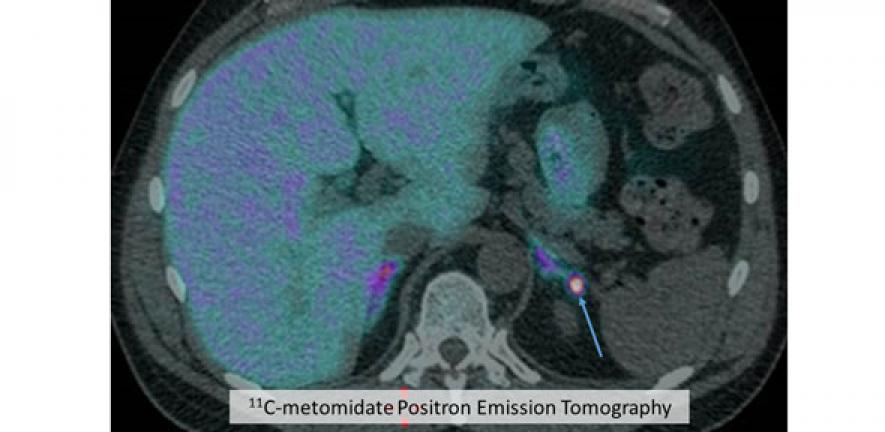
Hidden tumours that cause potentially fatal high blood pressure but lurk undetected in the body until pregnancy have been discovered by a Cambridge medical team.
Hidden tumours that cause potentially fatal high blood pressure but lurk undetected in the body until pregnancy have been discovered by a Cambridge medical team.
Conditions are often around for 60 years which we have had no explanation for, now we can get to the heart of what has gone wrong
Morris Brown
The small tumours concealed in the adrenal gland are “unmasked” in early pregnancy, when a sudden surge of hormones fires them into life, leading to raised blood pressure and causing risk to patients.
New research published today in the New England Journal of Medicine conducted by a team led by Professor Morris Brown, professor of clinical pharmacology at Cambridge University and a Fellow of Gonville & Caius College, identifies this small group of lurking tumours for the first time, and explains why they behave as they do.
The study means that, when patients are found to have high blood pressure early in pregnancy, doctors will now be encouraged to consider that the cause could be the tumours, which can be easily treated. Currently, adrenal tumours are not usually suspected as the cause of high blood pressure in pregnancy, and so go undiagnosed.
Brown and an international group of PhD students including first-author Ada Teo of Newnham College used a combination of state-of-the-art gene “fingerprinting” technology and old-fashioned deduction from patient case histories to work out that the otherwise benign tumours harbour genetic mutations that affect cells in the adrenal gland.
The mutation means the adrenal cells are given false information and their clock is effectively turned back to “childhood”, returning them to their original state as ovary cells. They then respond to hormones released in pregnancy, producing increased levels of the salt-regulating hormone aldosterone.
Aldosterone in turn regulates the kidneys to retain more salt and hence water, pushing up blood pressure. High blood pressure – also known as hypertension – can be fatal, since it greatly increases the risk of stroke and heart attack.
The new findings build on a growing body of research focusing on the adrenal gland and blood pressure. Sixty years ago, the American endocrinologist Dr Jerome Conn first observed that large benign tumours in the adrenal gland can release aldosterone and increase blood pressure (now known as Conn’s Syndrome).
Brown and his team have previously found a group of much smaller tumours, arising from the outer part of the gland, that have the same effect. The latest discovery drills down still further, revealing that roughly one in ten of this group has a mutation that makes the cells receptive to pregnancy hormones.
Brown said: “This is an example of what modern scientific techniques, and collaborations among doctors and scientists, allow you to do [through a form of genetic fingerprinting]. Conditions are often around for 60 years which we have had no explanation for, and now we can get to the heart of what has gone wrong.”
But the discovery also relied on what doctors call “clinical pattern recognition” – using experience to spot similarities. Brown was able to link together the cases of two pregnant women almost ten years apart and a woman in early menopause. All suffered high blood pressure, leading him to screen their adrenal tumours and identify a matching genetic mutation.
Pregnant women found to have the newly identified subset of tumours can now be identified more readily, and the tumours either treated with drugs or potentially even removed.
The research was funded by the Wellcome Trust, National Institute for Health Research, British Heart Foundation and A* Singapore.

The text in this work is licensed under a Creative Commons Attribution 4.0 International License. For image use please see separate credits above.




